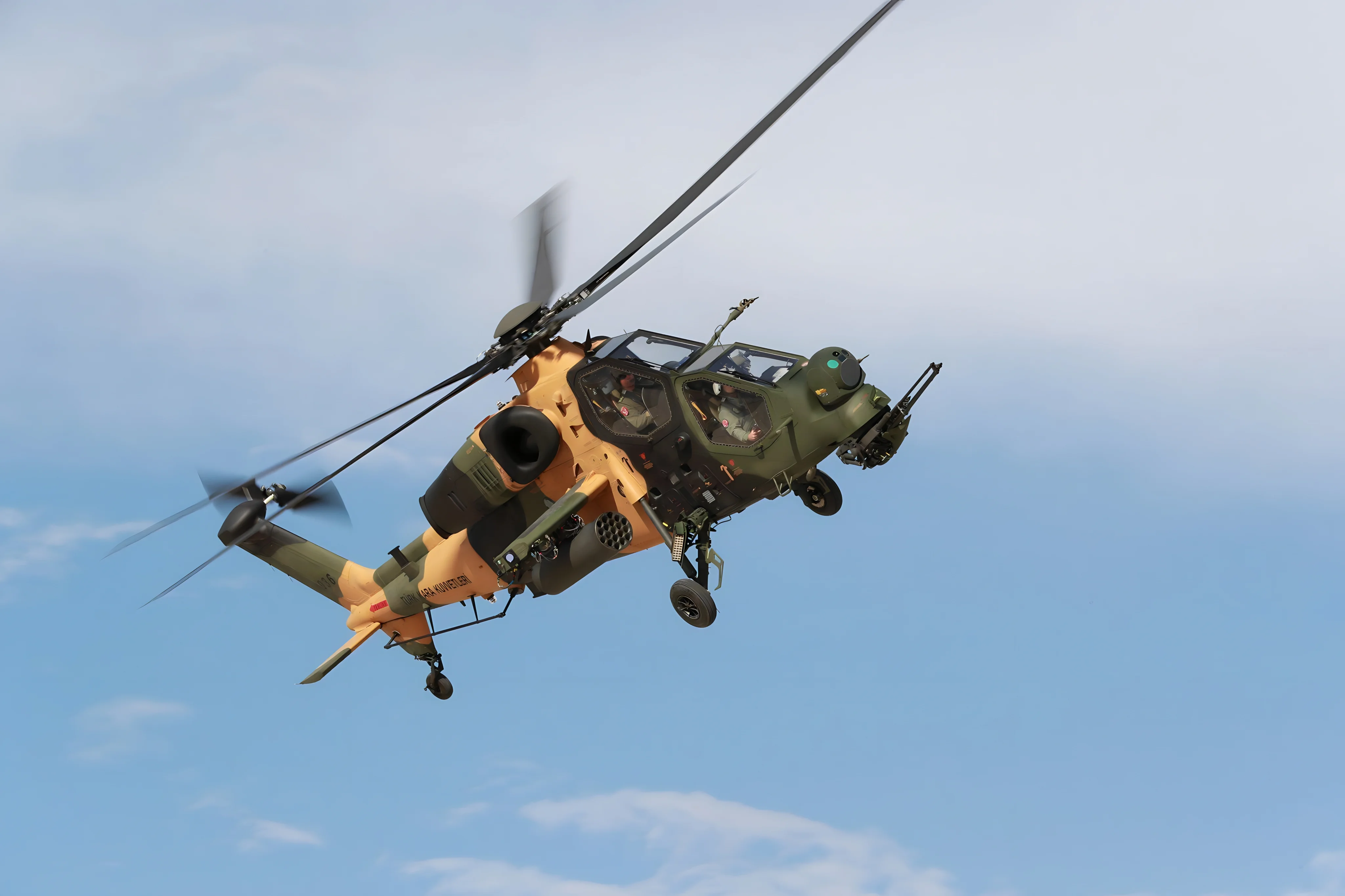

BREAKING NEWS

Turkey has developed the T-129 ATAK helicopter, in line with its vision of advancing the local defense industry and producing combat vehicles suitable for its geographical conditions. This project, a collaboration between Turkish Aerospace Industries (TUSAŞ) and AgustaWestland, is a customized version inspired by the Agusta A129 Mangusta's body design and is equipped with modern weapon systems. The helicopter, which made its first flight in Italy in 2009, has proven its performance through various maneuvers and tests.
Development
Project Initiation and Goals: In 1995, Turkey began efforts to develop a completely indigenous attack and reconnaissance helicopter. The Undersecretariat for Defence Industries (SSM) managed this project.
Tender Process and Agreement: AgustaWestland won the ATAK program tender in 2007. TUSAŞ was appointed as the main contractor, and a contract was signed in 2007 for the production of 51 T-129 helicopters.
Financial Details: The total contract value was set at approximately $3.2 billion. The shares of TUSAŞ, ASELSAN, and AgustaWestland in the project were announced as $556 million, $700 million, and $1.644 billion, respectively.
The T-129 ATAK, housing two Rolls-Royce and Honeywell manufactured LHTEC CTS800-4A engines, can reach a speed of 269 km/h and an altitude of 20,000 feet, making it ideal for challenging missions. It offers two configurations for close air support (T129-A) and multi-purpose missions (T129-B).
The ATAK program, which started serious preliminary work and development from 1995 in line with Turkey's goals of originality and local production, gained momentum in 2007 when the Undersecretariat for Defence Industries chose AgustaWestland. With the leadership of TUSAŞ and contributions from companies like ASELSAN and AgustaWestland, the production of 51 helicopters was planned, with a total cost of $3.2 billion. The project aims to provide the Turkish Land Forces with a platform that has more advanced technology than the existing AH-1 Super Cobra helicopters.
In the design phase, the helicopter's wheeled structure, 5-bladed rotor, and munitions used offer significant advantages. Avionics systems such as ASELSAN's ASELFLIR-300T Day/Night Thermal Imaging and Targeting System, AVCI Helmet-Mounted Sight System stand out as unique equipment. The helicopter is also equipped with ASELSAN-manufactured MXF-484 U/VHF and HF-SSB radio systems.
Design and Technical Features
Advanced Design and Avionics Systems: The T-129 is an improved version of the A129 Mangusta. Features include a shock-resistant body, self-repairing internal fuel tanks, armored engine sections, and an advanced rotor/blade design.
Weapon and Mission Computer: An original mission computer developed by ASELSAN and TÜBİTAK manages various functions of the helicopter. It is also equipped with systems like the ASELFLIR-300T Day/Night Thermal Imaging and Targeting System, AVCI Helmet-Mounted Sight System.
During the production process, TUSAŞ took on critical tasks such as body production, final assembly, and flight tests, while ASELSAN was responsible for the integration of the mission computer, avionics, and weapon systems. AgustaWestland contributed significantly to the platform's flight performance and technology transfer.
Performance
Production and Integration
Production Partners and Roles: TUSAŞ is responsible for body production, final assembly, and tests. ASELSAN handles the integration of avionics and weapon systems. AgustaWestland provides the platform and some technological elements.
First Flight and Delivery: The first T-129A prototype flew in 2011 and was delivered to the Turkish Land Forces in 2014.
Other local companies involved in the project added value as subcontractors, strengthening Turkey's defense industry ecosystem. The production of the T-129 ATAK, conducted at TUSAŞ's facilities in Ankara, represents a significant step in Turkey's helicopter industry.
Helicopter Types
The T-129 ATAK, with its advanced technology, versatile capabilities, and high rate of domestic production, has become a symbol of Turkey's independence in its defense industry. This helicopter is designed to meet the operational needs of the Turkish Armed Forces and is a world-class defense product.